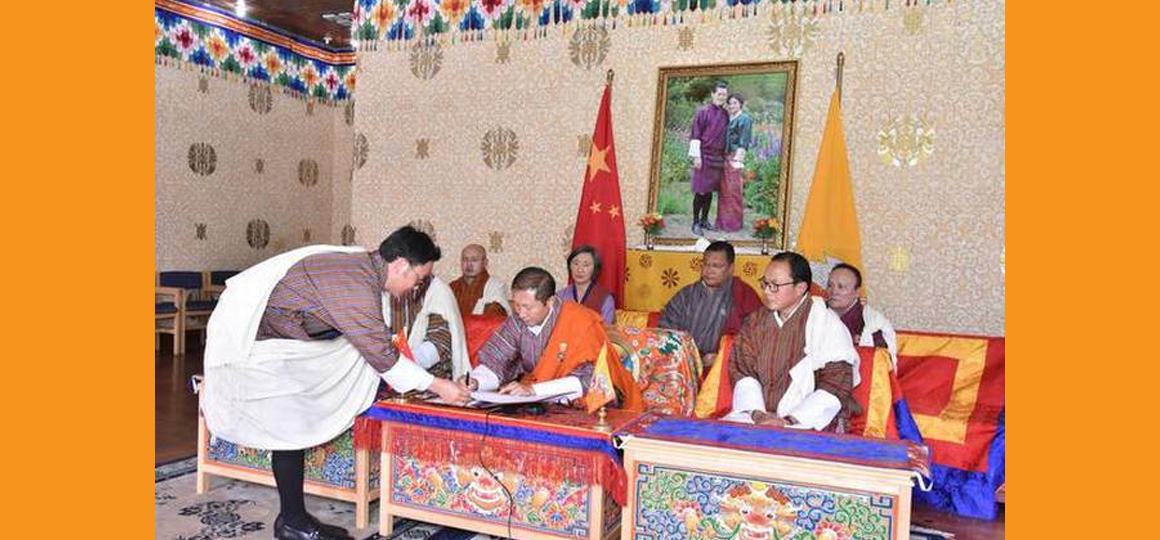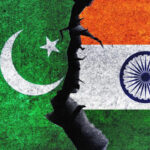New Delhi says it has ‘noted’ the agreement.
In a step towards resolving their boundary disputes, Bhutan and China signed an agreement on a three-Step roadmap to help speed up talks, at a meeting of Foreign Ministers of both countries held via videoconference on Thursday, a development that New Delhi said it has “noted”. The roadmap “for Expediting the Bhutan-China Boundary Negotiations”, is expected to kickstart progress on the boundary talks process that has been delayed for five years, first due to the Doklam standoff in 2017, and then by the Covid Pandemic. The timing of the agreement is particularly significant for New Delhi, given India-China border talks on their 17-month old standoff at the Line of Actual Control appear to have hit an impasse this week.
“The [Bhutan-China] Memorandum of Understanding on the Three-Step Roadmap will provide a fresh impetus to the Boundary Talks. It is expected that the implementation of this Roadmap in a spirit of goodwill, understanding and accommodation will bring the boundary negotiations to a successful conclusion that is acceptable to both sides,” said a press release issued by Bhutan’s Ministry of Foreign Affairs.
The Bhutanese Embassy in Delhi declined to comment on the details of the three steps outlined in the MoU, and sources said that information on the process of negotiations are “sensitive” and could not be shared at this stage. According to the MFA statement, the three-step roadmap had been finalised during the 10th Expert Group meeting in Kunming in April 2021, and presented for approval to their government in Thimphu and Beijing respectively.
Bhutanese Foreign Ministry sources called the three-step Roadmap a “positive development” that will enable the two sides to have “more focused and systematic discussions” on the boundary dispute over which they have held 24 rounds of talks and 10 Expert group meetings in the past 37 years.
Since 1984, talks between Bhutan and China have largely focused on two separate areas of dispute, including Doklam and other areas in Bhutan’s West, near the India-China-Bhutan trijunction measuring 269 sq. kms, and the Jakarlung and Pasamlung valleys located near Tibet to Bhutan’s North, which measure 495 sq. kms. More recently, China has also laid claims to Bhutan’s Eastern Sakteng region.
The Ministry of External Affairs said it was aware of the MoU signing on Thursday, but did not respond to a question from The Hindu about whether India was informed about the details of the MoU in advance, and whether a possible “exchange” of disputed territories involving the Doklam trijunction area was a particular concern for India.
“We have noted the signing of the memorandum between Bhutan and China, we are aware of it. You would be aware that Bhutan and China have been holding boundary negotiations since 1984. India has similarly been holding boundary negotiations with China,” said MEA spokesperson Arindam Bagchi during his weekly interaction with journalists.
The talks on Thursday were held between Bhutan Foreign Minister Tandi Dorji and Chinese Assistant Minister of Foreign Affairs Wu Jianghao. Bhutan’s Ambassador to India Gen(Retd) Vetsop Namgyel and China’s Ambassador to India Sun Weidong were also present at the virtual meeting, as Bhutan and China don’t have direct diplomatic relations, and liaise via their embassies in Delhi.
Bhutan, China sign MoU for 3-step roadmap to expedite boundary talks
New Delhi says it has ‘noted’ the agreement.
In a step towards resolving their boundary disputes, Bhutan and China signed an agreement on a three-Step roadmap to help speed up talks, at a meeting of Foreign Ministers of both countries held via videoconference on Thursday, a development that New Delhi said it has “noted”. The roadmap “for Expediting the Bhutan-China Boundary Negotiations”, is expected to kickstart progress on the boundary talks process that has been delayed for five years, first due to the Doklam standoff in 2017, and then by the Covid Pandemic. The timing of the agreement is particularly significant for New Delhi, given India-China border talks on their 17-month old standoff at the Line of Actual Control appear to have hit an impasse this week.
“The [Bhutan-China] Memorandum of Understanding on the Three-Step Roadmap will provide a fresh impetus to the Boundary Talks. It is expected that the implementation of this Roadmap in a spirit of goodwill, understanding and accommodation will bring the boundary negotiations to a successful conclusion that is acceptable to both sides,” said a press release issued by Bhutan’s Ministry of Foreign Affairs.
The Bhutanese Embassy in Delhi declined to comment on the details of the three steps outlined in the MoU, and sources said that information on the process of negotiations are “sensitive” and could not be shared at this stage. According to the MFA statement, the three-step roadmap had been finalised during the 10th Expert Group meeting in Kunming in April 2021, and presented for approval to their government in Thimphu and Beijing respectively.
Bhutanese Foreign Ministry sources called the three-step Roadmap a “positive development” that will enable the two sides to have “more focused and systematic discussions” on the boundary dispute over which they have held 24 rounds of talks and 10 Expert group meetings in the past 37 years.
Since 1984, talks between Bhutan and China have largely focused on two separate areas of dispute, including Doklam and other areas in Bhutan’s West, near the India-China-Bhutan trijunction measuring 269 sq. kms, and the Jakarlung and Pasamlung valleys located near Tibet to Bhutan’s North, which measure 495 sq. kms. More recently, China has also laid claims to Bhutan’s Eastern Sakteng region.
The Ministry of External Affairs said it was aware of the MoU signing on Thursday, but did not respond to a question from The Hindu about whether India was informed about the details of the MoU in advance, and whether a possible “exchange” of disputed territories involving the Doklam trijunction area was a particular concern for India.
“We have noted the signing of the memorandum between Bhutan and China, we are aware of it. You would be aware that Bhutan and China have been holding boundary negotiations since 1984. India has similarly been holding boundary negotiations with China,” said MEA spokesperson Arindam Bagchi during his weekly interaction with journalists.
The talks on Thursday were held between Bhutan Foreign Minister Tandi Dorji and Chinese Assistant Minister of Foreign Affairs Wu Jianghao. Bhutan’s Ambassador to India Gen(Retd) Vetsop Namgyel and China’s Ambassador to India Sun Weidong were also present at the virtual meeting, as Bhutan and China don’t have direct diplomatic relations, and liaise via their embassies in Delhi.






NO COMMENT